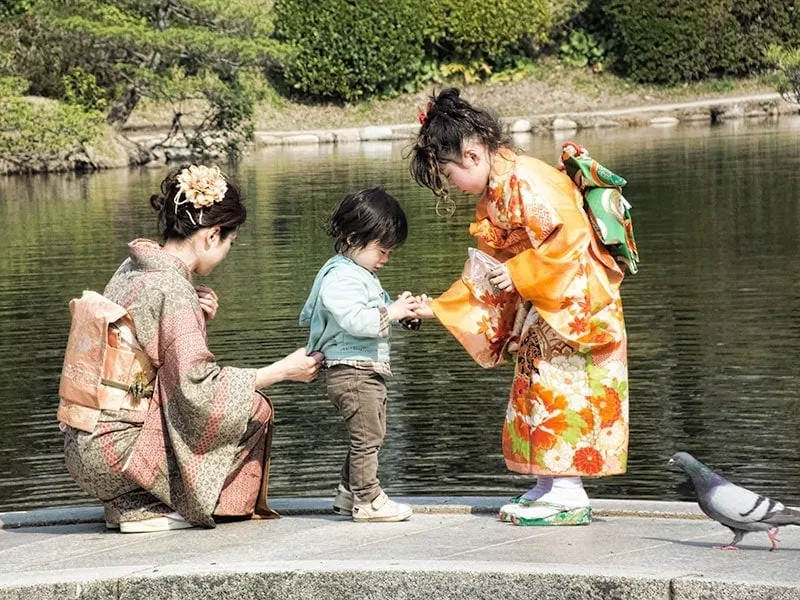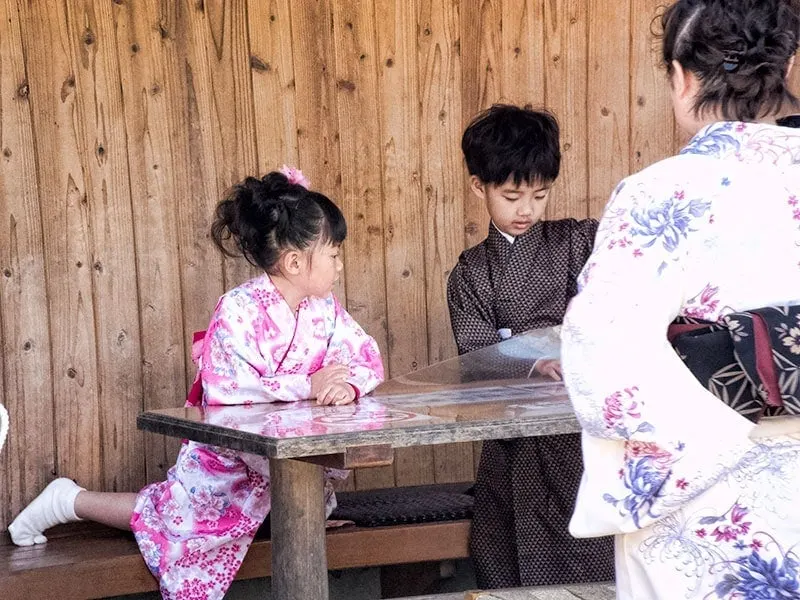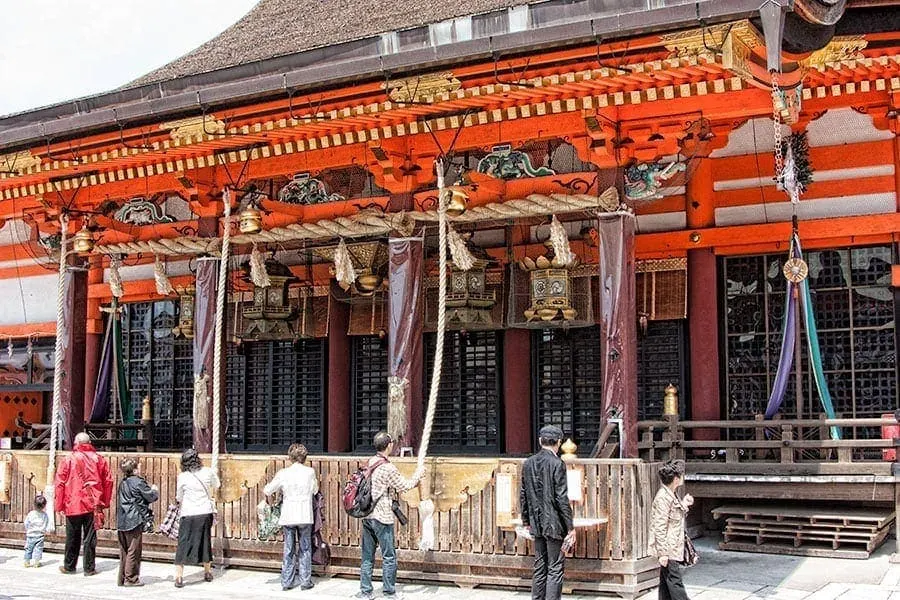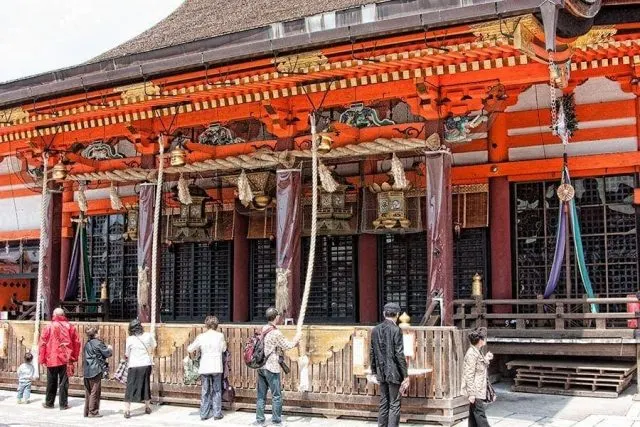There’s not much that’s more adorable, or kawaii I guess, than dozens of young children in traditional kimonos. It’s a sight you’re likely to see a lot in Shinto shrines during the shichi-go-san festival in mid-November. We couldn’t resist making space in our itinerary to include an extra shrine or two during an autumn visit to Japan.

Shichi Go San literally translates as seven-five-three. These are the ages of the children taking part in the festival.
The Shinto shichi-go-san ceremony
The festival date is always the 15th of November but it’s visiting the shrine with family members that matters so although the 15th is the biggest day you’re likely to see children dressed and taking part in the ceremony throughout November.
When the date falls on a working day it’s not always possible for the family to be together to celebrate and it’s more important for everyone to be present than the actual date itself. From the little I know of Shinto traditions I do love that they are pragmatic rather than prescriptive, focusing on what matters and the rest falls into place.
November 15 is also the day for celebrating the autumn harvest under the lunar calendar and is a very auspicious date. Within the shrine, you might also see a harvest offering to the deity Ujigami.
The ceremony itself is fairly quick and simple. The Shinto Priest will give thanks to Ujigami, the guardian god of good health for the child safely reaching the ages 3 and 5 for boys and 3 and 7 for girls. He also requests the deity to continue looking over them in the future. There is a purification ceremony where the child sips some sacred sake, not alcoholic of course, and that’s pretty much all.
The children are then usually given a small gift of chitose ami (thousand-year candy) by the Priest. You will see the children, or more often the parents, carrying a paper bag containing their treat. The bags often have a picture of a turtle and a crane symbolising longevity and bamboo and pine trees represent good luck.

The history of the shichi-go-san festival
The festival dates back to the Heian period when Japan was ruled from Kyoto (between 794-1185). At that time only the aristocratic families celebrated. It was adopted more widely in the Edo period (between 1603-1868) when the Samurai class also participated but it wasn’t commonly practised by all until the Meiji era (beginning 1868).
In Japan, and the Shinto religion, odd numbers are lucky and even numbers (especially 4) are unlucky this is part of the reason for these particular ages being celebrated. Historically it was common for children not to survive childhood illnesses so it was considered that until the age of 7, they belonged to the gods, a type of coping mechanism I guess for losing a child so young but having faith that they had been called back to the gods.
There were also specific traditions that related to each of the ages:
- Traditionally children had their heads shaved until the age of three so the celebration was of them finally being able to grow their hair. Although the custom is no longer practised both boys and girls celebrate at the age of 3
- At age 5 boys put on the traditional dress known as the hakama for the first time in public. The celebrations is called hakamagi-no-gi.
- At age 7 girls begin wearing the obi sash to tie their kimono, before that they use only the decorative cords. The celebration is called obitoki-no-gi.

Joining in the Shichi-go-san celebrations
Shinto is a traditional Japanese religion not practised outside Japan but visitors are welcomed to the shrines, they are a place of gathering, community and celebration. There are a few guidelines for visiting a Shrine but foreigners are not expected to believe or worship although they are welcome to offer a prayer if they wish.
Generally, children are happy to pose for photos and the parents are accommodating but of course in any situation where a stranger’s child is being photographed if it is in a way where they may be recognizable always ask permission from the parent and respect their wishes. If a language barrier limits your ability to communicate in words then indicating the camera, the child and a smile should work.
You may also want to congratulate the family on the important event, the simple version of congratulations for an event like this is “omedetou gozaimasu”, you will hear it being called out all around you during the celebrations.
Feeling Inspired? Save the pictures to Pinterest.
If you’ve been to a Japanese Shrine for shichi-go-san or any of the children’s festivals we’d love you to share your experiences in the comments below.



